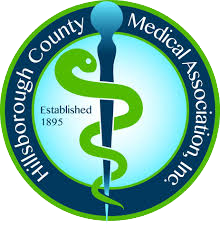
A knee arthroscopy is a minimally invasive surgical procedure that incorporates an arthroscope—a long, thin instrument with a tiny lighted camera attached to the end. The arthroscope is inserted through a small incision and sends detailed, live images to a monitor in the operating room, allowing the surgeon to get an up-close look at the knee joint without having to make a large incision. Other thin surgical instruments may also be used in conjunction with the arthroscope to treat joint issues such as torn ligaments or remove loose pieces of cartilage.
What Are the Advantages of a Knee Arthroscopy?
As a minimally invasive surgery, knee arthroscopy requires smaller incisions and disturbs less healthy tissue than traditional open knee procedures. This approach results in:
- Less surgical blood loss
- A lower risk of complications
- Less post-operative pain
- A faster recovery period, in most cases
Still, any medical procedure comes with some measure of risk. Although rare, possible complications associated with knee arthroscopies include blood clotting, infection, injury to the knee joint or surrounding structures, and adverse reactions to anesthesia.
When Is a Knee Arthroscopy Appropriate?
Knee arthroscopies have multiple uses. In some cases, an arthroscopy may be performed to view the knee joint and confirm a diagnosis. This procedure can also be used to treat knee problems such as:
- Baker’s cysts
- Torn anterior or posterior cruciate ligaments
- Knee fractures
- Torn menisci
- Loose pieces of cartilage or tissue
- Swollen joint lining (synovium)
- Kneecap (patella) misalignment
What Happens During a Knee Arthroscopy Procedure?
The specific details of a knee arthroscopy will vary according to why the procedure is being performed. Generally speaking, though, here’s what happens during a knee arthroscopy:
- The patient receives localized or general anesthesia to prevent them from feeling discomfort during the operation.
- The surgeon pumps a harmless saline solution into the knee to inflate the joint space and increase surgical visibility.
- Between one and three small incisions are made around the knee joint to accommodate the arthroscope and other surgical instruments, if necessary.
- At the end of the surgery, the saline is drained from the knee and the incisions are stitched and bandaged.
Most patients can go home the day of their operation. Knee arthroscopy recovery times vary based on the reason for surgery, but most patients are encouraged to walk very shortly after surgery and can return to normal activities in about six weeks or so.
Our Approach to Knee Arthroscopy
Tampa Orthopaedic & Sports Medicine Group—a division of Florida Medical Clinic—is home to Dr. Daniel Murphy, a board-certified orthopedic sports medicine surgeon who routinely performs knee arthroscopy procedures for patients in the Tampa Bay area. Dr. Murphy combines advanced surgical techniques with personalized, compassionate care to help his patients achieve the best possible outcomes and get back on the move.
To schedule an appointment at Tampa Orthopaedic & Sports Medicine Group, contact our friendly professionals today at (813) 253-2406 or request an appointment on our website. We accept most health insurances and are here to answer any questions you may have.












